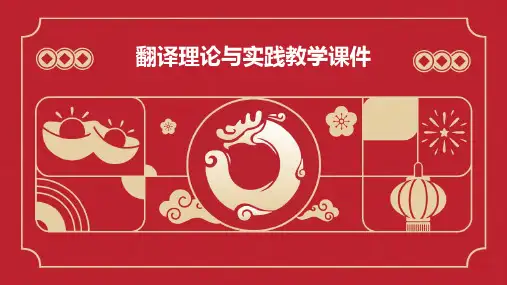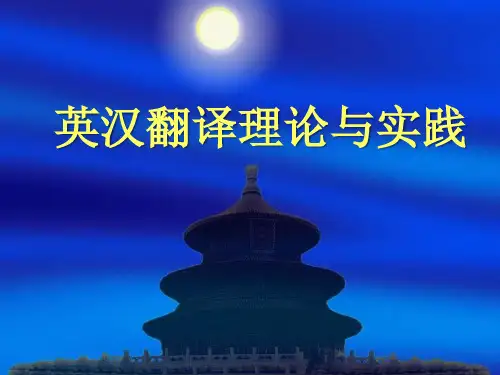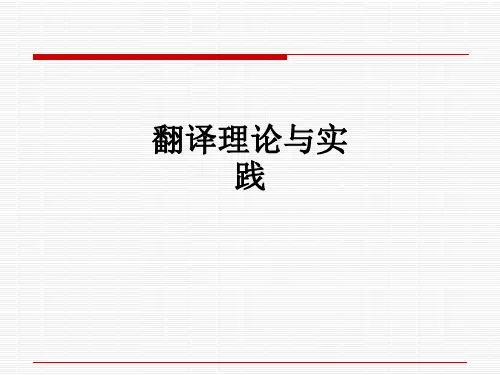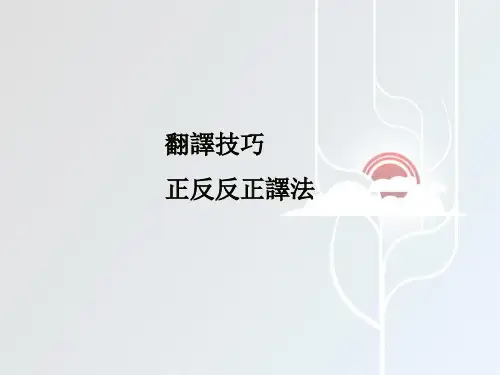4.正反反正的翻譯策略
• 1)反話正說 (英漢) • 例3:No pains, no gains. • 譯文:一份耕耘,一份收穫。 • 例4:A learned man is not above asking. • 譯文:有學問的人總是虛心求教別人。 • 例5:A big elephant is not more an animal than a little
• 例2:When John was introduced to the old couple, they said simply, “We’ve read your article. We expected to meet an older man.”
• 譯文:當有人把約翰介紹給這對老年夫婦時,他們只是淡淡 地說:“我們看過你的文章,沒想到你這麼年輕。”
• 副詞:hardly, rarely, seldom, barely, out, too…to, in vain…
• 介詞:beyond, without, above, except, save, but, instead of …
• 連詞:before, unless, or, other than, rather than… • 4) 採用句法手段: • before, unless, or, other than, rather than…
• 原文“expected to meet an older man”是從正面來表達,譯 文運用反譯法,改從反面來表達“沒想到你這麼年輕”,一 來使語義更加清晰,二來也增強了其語言效果。
3.正反反正譯法的功能
• 正反反正譯法的使用可以使語義表達更加清晰, 同時很大程度上可以增強譯文的修辭效果。譯者 必須在準確理解原文的基礎上,根據譯入語的行 文習慣和修辭效果,靈活運用正說與反說,使譯 文的表達儘量符合譯入語讀者的思維方式和表達 習慣。










